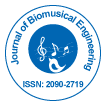Editorial єЪБПНш
Biomusical Engineering and Music as Therapy - An EditorГўВ?В?s Note
Alexander J. Graur*
Member, The New York Academy of Sciences, Post-Graduate School in Health Psychology, University of Torino, Italy
- *Corresponding Author:
- Alexander J. Graur
Member, The New York Academy of Sciences
Post-Graduate School in Health Psychology
University of Torino, Italy
Tel: +39 011 670 6111
E-mail: granimus@yahoo.com
Received date: June 25, 2016; Accepted date: June 26, 2016; Published date: June 28, 2016
Citation: Graur AJ (2016) Biomusical Engineering and Music as Therapy - An Editor’s Note. J Biomusic Eng 4:e112. doi:10.4172/2090-2719.1000e112
Copyright: © 2016 Graur AJ, This is an open-access article distributed under the terms of the Creative Commons Attribution License, which permits unrestricted use, distribution, and reproduction in any medium, provided the original author and source are credited.
Visit for more related articles at Journal of Biomusical Engineering
Editor’s Note
This new issue of JBME (volume 4, issue 1) is a quite comprehensive review of the actual tendencies in as Therapy related aspects.
Such an initiative is interesting to a wider category of public, not only to the usual specialists interested in biomusical engineering aspects.
Distinguished authors contribute to a large panorama on the applications of Music in some therapy techniques. Various approaches are introduced, like the psychological approach in the papers of Naeem F, Bedirhan Gültepe and Hamit Coskun; the integration of Music with other therapies (Eric B Miller and Rieko Eguchi); the use of the uptodate technology and Music in the clinical environment (Matthew H Woolhouse and Alex Zaranek); and the use of Music in educational process (Piers Spencer). Many tendencies are well presented, with sound logic and exhaustive bibliography.
The reader will find original points of view regarding the main goal of our journal especially in the contribution of Miller and Eguchi and in the contribution of Woolhouse and Zaranek. The first presents a research on “how the brain would react while listening to different combinations of major/minor sound and happy/sad lyrics” (quoted from the abstract of the paper). The interesting findings open the way for deeper applications in therapy, by using the appropriate tonalities and lyrics to address specific diseases. The second paper describes an application designed for people with Parkinson’s disease, in which a motionsensing camera was coupled with a rotatable function menu in order to enable the patient to use few gestures for the performance of intuitive navigation into the computer program. The combination musicdance of the program enable a more effective interaction of Parkinson’s disease patient with the reality, helping to maintain user’s motivation and interest.
The psychological approach using Music, previously well known in its various aspects is further developed in the contributions of Naeem F, and Gultepe/Coskun. The author Naeem F. made a general presentation of the use of music as therapy; interesting the conclusion, proposing the music as a medium to deliver the Cognitive Behavior Therapy. Even if not new, the idea it is worth to be reв?ђproposed to the great audience. Gültepe/Coskun present also, in general terms, the psychological approach using Music in therapy. The contribution is a valid even short way to remember to a reader less into the Music as Therapy world some of the capacities of music to help in the clinical environment.
The paper of Spencer is interesting, but in my opinion has little to do with biomusical engineering. It is worth to be read, however, for the interesting information regarding the history of music education in the UK.
Concluding, I hope more and more authors will contribute their findings to the journal; biomusical engineering is a large field, not limited to the music as a therapy in listening, but including also the findings and applications of theoretical sciences, medicine, neurosciences and other fields of research, mainly in clinical environment.
Enjoy this new volume and consider bringing your contribution to the further issues of our journal!
--Share This Article
Relevant Topics
Recommended Journals
Article Tools
Article Usage
- Total views: 10046
- [From(publication date):
June-2016 - Nov 22, 2024] - Breakdown by view type
- HTML page views : 9331
- PDF downloads : 715
